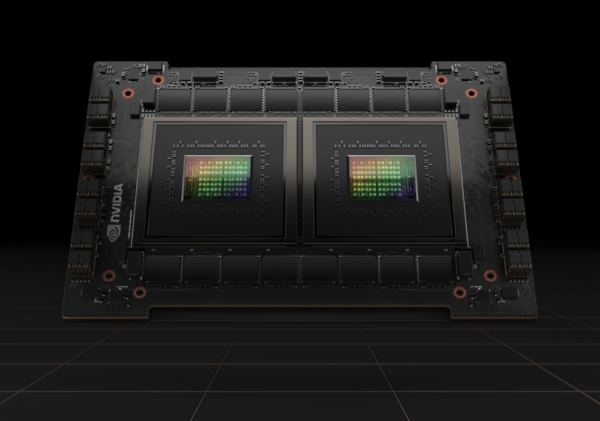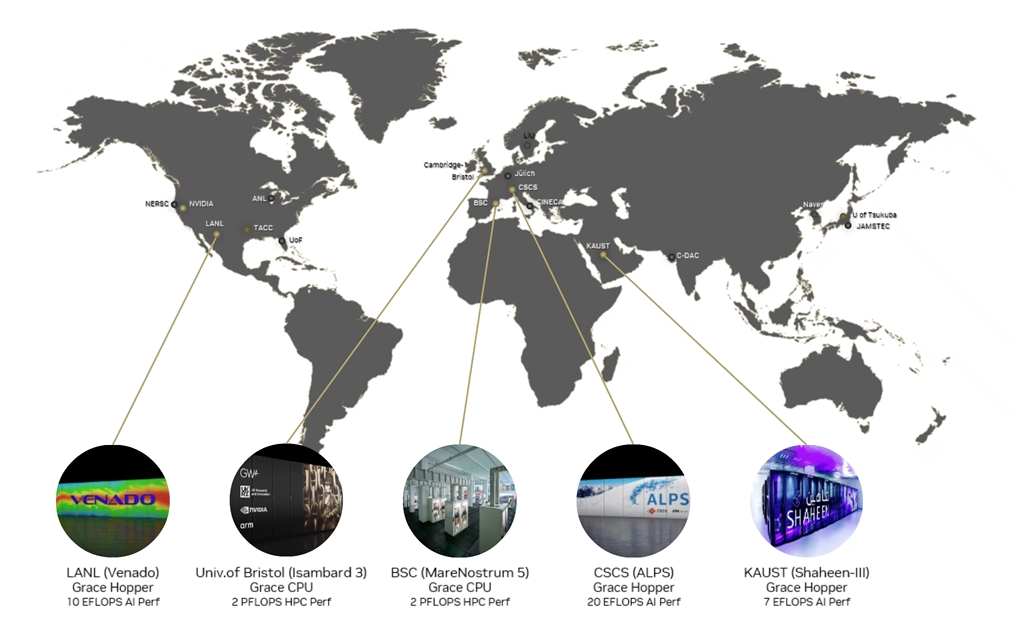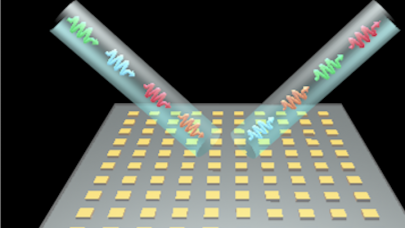Nvidia is ramping up deployment of its Superchips – amalgamated chips that include either two CPUs (the Grace CPU Superchip) or a CPU and a GPU (the Grace Hopper Superchip). On the first day of the ISC 2023 conference in Hamburg, the accelerator giant is announcing the development of an HPE-built European supercomputer based on its Grace CPU Superchips: Isambard 3, which will be based in the UK.
Isambard 3 (pictured in the header, with civil engineer Isambard Kingdom Brunel on the cabinets) will feature 384 Nvidia Grace CPU Superchips, which Nvidia says will deliver “about 2.7 petaflops of FP64 peak performance[.]” Nvidia claims that the system will also consume “less than 270 kilowatts of power, ranking it among the world’s three greenest non-accelerated supercomputers.”
It should be noted that competition for the title of “most efficient non-accelerated supercomputer” is not particularly fierce; as of today’s new Top500 and Green500 lists, 2020’s Fugaku system holds the top spot among the most efficient non-accelerated supercomputers at 15.42 gigaflops per watt. Meanwhile, the Henri system – which debuted Nvidia’s H100 GPU on the lists last November – holds the overall top spot on the Green500 at 65.40 gigaflops per watt – more than quadruple the anticipated efficiency of Isambard 3. (Nevertheless, CPU-based systems will continue to be built, and efficiency improvements are always welcome.)

“As climate change becomes an increasingly existential problem, it’s vital for computing to embrace energy-efficient technologies,” commented Ian Buck, vice president of hyperscale and HPC at Nvidia. “Nvidia is working alongside the Arm Neoverse ecosystem to provide a path forward for the creation of more energy-efficient supercomputing centers, driving important breakthroughs in scientific and industrial research.”
Isambard 3 – like its predecessor systems – will serve the GW4 Alliance, which consists of “four of the most research-intensive and innovative universities in the UK”: the University of Bath, the University of Bristol, Cardiff University and the University of Exeter. The University of Bristol is leading the project. Isambard 3 is also similar to its predecessors in another regard: all three have been Arm-based systems. The GW4 marketed Isambard 1 – which launched in 2018 and was based on Cavium’s (later Marvell’s) ThunderX2 CPU – as “the world’s first production 64-bit Arm supercomputer.” Isambard 2, launched in 2020, doubled the size of Isambard with 336 nodes. Both were based on Cray systems, a lineage that also persists with Isambard 3.
Nvidia expects Isambard 3 to have 6× the efficiency of its predecessor. Simon McIntosh-Smith, PI for the Isambard projector and professor of high-performance computing at the University of Bristol, said that the efficiency improvement was attributable to the Grace CPU.
In terms of use cases, Isambard 3 is targeted at applications in climate science, AI, life sciences, medicine, astrophysics, biotech and energy. Nvidia specifically cited ongoing work on research areas for Isambard 2, such as research on Parkinson’s disease, osteoporosis and Covid.
Isambard 3 is planned to go into production in spring 2024.

The new system is one of several being touted by Nvidia as its Superchips ramp up. Alps, the new Swiss supercomputing infrastructure, is slated to debut the Grace Hopper Superchip, while the U.S. debut of the Grace Hopper Superchip will be in the Venado system at Los Alamos National Laboratory. Grace CPU Superchips are also slated to appear in one of the partitions of MareNostrum 5 and Grace Hopper Superchips will power the new Shaheen III supercomputer at KAUST.
On the other hand, no word yet on the Arm/Nvidia-based supercomputer that was announced when Nvidia was still hoping to acquire Arm. That system was also slated to be hosted in the UK – specifically, at the Arm headquarters in Cambridge. Asked about that system during a press pre-briefing, Nvidia did not comment.



























































